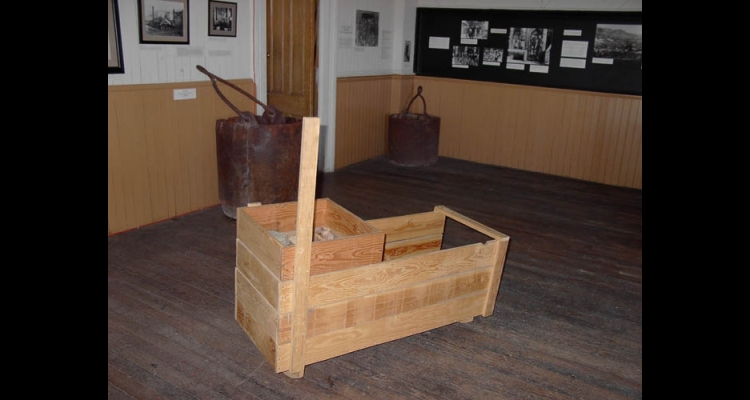Placer Mining
With the California Gold Rush, fortune seekers flooded into the West. Thousands scattered into every Sierra ravine looking for widely distributed gold flakes and nuggets in placer sands deposited by creeks and rivers.
Placer miners moved from one place to the next. They used inexpensive, movable wooden boxes called rockers and long toms to wash sand away from gold. The gold pan, a cliché of placer mining, had a limited capacity and was only for sampling sites during prospecting.
Although the Gold Canyon miners of the 1850s worked to the east of the Sierra, they were part of this regional movement. Throughout the decade, they headed north and uphill from a settlement eventually called Dayton, located where the canyon met the Carson River.
Following the pattern elsewhere, Gold Canyon placer miners depleted the gold-bearing sands. By the late 1850s, many left, performing a valuable service as they identified new mining districts in remote areas. A handful remained and searched the mountain above. Their 1859 discovery of the Comstock Lode transformed the region. After that, most prospectors searched for concentrated ore, but placer deposits like those around Tuscarora, a center of Chinese mining beginning in the late 1860s, could still attract attention.
Article Locations
Related Articles
None at this time.
